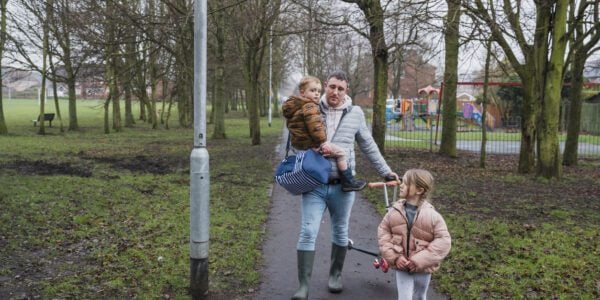Britain’s tax system is ripe for reform in ways that could significantly increase people’s welfare and improve the performance of the economy, according to a landmark review chaired by the Nobel laureate Sir James Mirrlees for the Institute for Fiscal Studies and funded by the Nuffield Foundation.
The Mirrlees Review, the findings of which are launched today, argues that a coherent vision for the tax system is needed, and lays out a comprehensive set of proposals for tax reform.
The key principles that underlie the proposals are that the tax system should:
- be designed as a whole, in conjunction with the benefits system. The system as a whole needs to be green and to be progressive. But not every tax needs to be green or progressive. Indeed, not all should be. The way taxes (and the benefit system) fit together matters very much.
- seek neutrality. Tax systems that distort people’s behaviour by treating similar activities differently without very good reason – as the UK system currently does – create inefficiency, complexity and opportunities for avoidance. Exceptions, to deal with the costs of smoking or pollution for example, should be limited and carefully designed.
- achieve progressivity as efficiently as possible. That means relying on the rate schedule of personal taxes and benefits – rather than inefficiently distorting the tax base – to achieve redistribution. It also means designing that rate schedule carefully to minimise the extent to which the tax system reduces employment and earnings.
Sir James Mirrlees said:
“The review shows that the UK system falls short of the ideal in costly and inequitable ways. It discourages saving and investment, and distorts the form they take. It favours corporate debt over equity finance. It fails to deal effectively with either greenhouse gas emissions or road congestion. The revenue it raises, and the redistribution it does, could be achieved in less costly ways.
“We propose both a long-term vision of a better system, and directions for reform. Some of the recommended reforms involve tweaks to current policy; others involve radical change, and are probably for the longer term. It is undeniable that some of the proposed changes would be politically difficult. But failure to reform imposes enduring costs.”
Main areas of concern and major recommendations for change
Taxation of earnings
The current UK tax system is opaque and unnecessarily complex, imposing two entirely separate taxes on earnings – income tax and National Insurance contributions (NICs). Recent changes have introduced a bizarre marginal rate structure, with marginal income tax rates rising from 40% to 60% on incomes between £100,000 and £112,950, then falling back to 40% before rising again to 50%.
The UK also has a highly complex array of welfare benefits which are difficult for people to deal with and which impose very high effective tax rates on some low earners. The system does not take proper account of what we know about how different groups of people respond to incentives.
- The review recommends that the rate structure of income tax should be simplified, and income tax and NICs should be merged.
- A single integrated benefit should be introduced to replace all or most of the current multiplicity of benefits, rationalising the way in which total support varies with income and other characteristics.
- Individuals around pension age – between 55 and 70 – and parents of school-age children are known to be particularly responsive to work incentives. The tax and benefit system should be changed to strengthen these incentives. The review illustrates reforms affecting these groups which could increase total employment by over 200,000 and aggregate earnings by nearly £3 billion.
Indirect taxes
The UK applies a zero rate of VAT to far more goods and services than most other countries. Reduced and zero rates of VAT (for example on food) are often justified as a way of helping people on low incomes. But this is an expensive and highly inefficient way of doing so. Charging a reduced rate of VAT on domestic fuel consumption has all these defects and, in addition, effectively subsidises energy use and encourages carbon emissions.
- VAT should be extended to nearly all spending. This would reduce complexity and avoid costly distortions to consumption choices. The money raised can be spent on cutting income taxes and raising benefits in a way that is broadly distributionally neutral, and that protects work incentives, although inevitably there will be winners and losers from such a change.
- It is hard to apply VAT to financial services in the same way that it is applied to other goods and services. But a tax broadly equivalent to VAT should, and we believe could, be applied.
Taxation of housing
Housing is not subject to VAT. It is subject to stamp duty land tax, which is an inefficient and badly designed tax on transactions. It is also subject to council tax. But council tax is regressive without good reason, and in England and Scotland is now based on property valuations that are nearly 20 years out of date.
- Stamp duty should be abolished and council tax reformed so that payments are fully proportional to house value and are based on up-to date values. This reformed council tax, which the review dubs a Housing Services Tax, would effectively stand in place of a VAT on housing consumption.
Environmental taxes
Environmental taxes, and especially taxes on greenhouse gas emissions and on motoring, are an increasingly important part of an effective tax system. But they need to be well designed. In the UK, we have a multitude of different effective tax rates on carbon emissions that vary between different users of energy and between different fuels. Road fuel is subject to very high levels of taxation, but this is not a good way to tackle the biggest cost created by motorists – congestion. As fuel efficiency improves and, eventually, we move to more electric vehicles, fuel duty will become less and less effective.
- There should be a consistent price on carbon emissions, through a combination of extended coverage of the EU Emissions Trading Scheme and a consistent tax on other emission sources. This would include a tax on domestic gas consumption.
- We should work towards a comprehensive system of congestion charging on the roads, replacing most of fuel duty.
Taxes on saving
Getting taxes on saving right is vital. Many forms of saving are discouraged at present and different forms of saving are treated very differently, distorting people’s decisions and creating complexity and avoidance opportunities. Repeated efforts to reform capital gains tax are just one illustration of the difficulties policymakers have with this part of the tax system.
- The risk-free or ‘normal’ return to saving should not be taxed, so that saving is not discouraged. Standard bank and building society accounts should be entirely free of tax, equity ISAs should be maintained and the main features of the current tax treatment of pensions should be retained. For other substantial holdings of risky assets, only returns above the ‘normal’ rate should be subject to tax.
- These returns (income and capital gains) above the normal return should be taxed in full, with losses relieved in full. They should be taxed at the same rate schedule as earned income (including NICs), with reduced rates for dividends and capital gains on shares to reflect corporation tax already paid. Equalising the marginal tax rates on earnings and different forms of capital income in this way would reduce distortions between different economic activities and opportunities for avoidance.
Business taxes
Corporation tax currently discourages investment financed by equity and favours debt finance. Profits are also taxed at different rates according to the level of profits, and corporation tax is not properly integrated with personal taxes, creating complexity and opportunities for avoidance. Meanwhile, business rates, as a tax on a produced input into the production of other goods, contravene one of the most basic tenets of good tax design, thereby creating a bias against property-intensive production and discouraging development.
- An Allowance for Corporate Equity should be introduced into the corporation tax. This would ensure an equal treatment of equity- and debt-financed investments and that only profits above the normal return to capital invested are taxed. This reform could increase national income by 1.4% (more than £20 billion at current prices).
- The tax treatment of employment, self-employment and corporate source income should be aligned.
- A land value tax for business and agricultural land should, if practicable, replace business rates and stamp duty land tax on non-domestic property.
ENDS
Notes to Editors
1. The findings of the Mirrlees Review were launched on 10 November 2010 in London.
2. The review was funded by the Nuffield Foundation and the ESRC.
3. The first volume of work from the review, Dimensions of Tax Design – an edited collection of specially commissioned studies – was published by Oxford University Press earlier this year.
4. The second and final volume, Tax by Design, which brings together the analysis and views of the review’s editorial team, will be published by OUP in the new year.
5. Preliminary drafts of the chapters of Tax by Design will be available from the IFS website.
6. The editors of the review are: Sir James Mirrlees, Stuart Adam, Timothy Besley, Richard Blundell, Stephen Bond, Malcolm Gammie, Paul Johnson, Gareth Myles and James Poterba. Robert Chote was an editor until he stepped down from IFS to run the new Office for Budget Responsibility in October this year.






















































